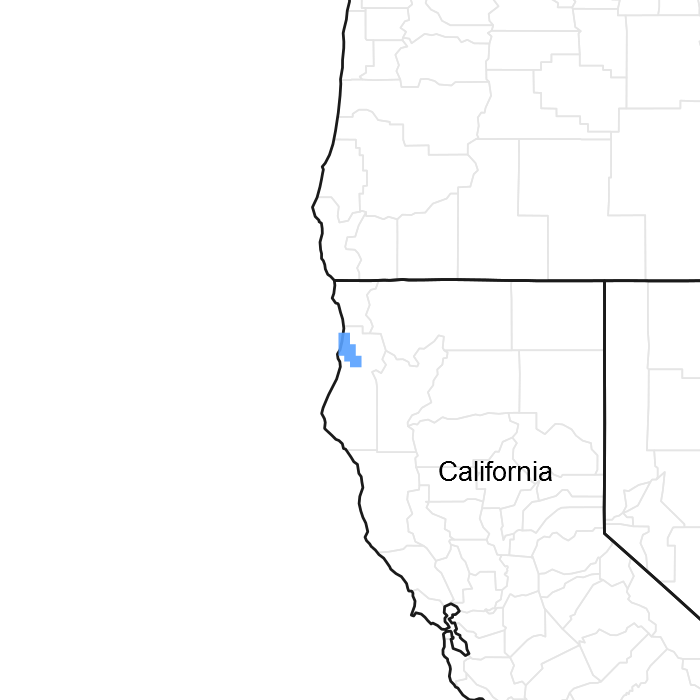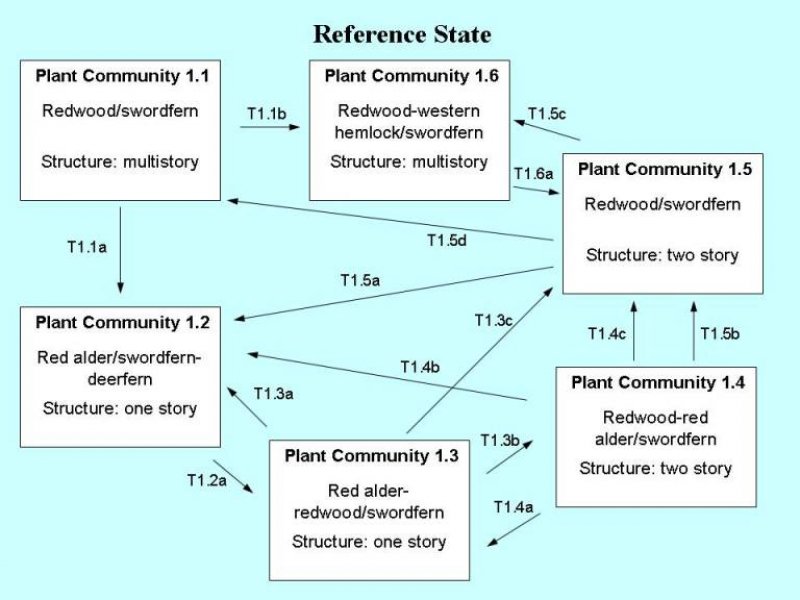
Natural Resources
Conservation Service
Ecological site F004BX122CA
Redwood/western swordfern, mountain slopes and earthflows, schist, gravelly loam
Accessed: 12/19/2025
General information
Provisional. A provisional ecological site description has undergone quality control and quality assurance review. It contains a working state and transition model and enough information to identify the ecological site.

Figure 1. Mapped extent
Areas shown in blue indicate the maximum mapped extent of this ecological site. Other ecological sites likely occur within the highlighted areas. It is also possible for this ecological site to occur outside of highlighted areas if detailed soil survey has not been completed or recently updated.
Associated sites
| F004BX101CA |
Redwood/Douglas-fir/Pacific rhododendron, mountain slopes, schist, clay loam The redwood-Douglas-fir/rhododendron site F004BX101CA can be found upslope from F004BX122CA or adjacent to F004BX122CA on spur ridges or more stable slopes. |
|---|---|
| F004BX111CA |
Redwood/western swordfern-redwood sorrel, floodplains and terraces, loam This redwood/swordfern-oxalis site can be found on alluvial terraces and along larger stream courses. |
Similar sites
| F004BX111CA |
Redwood/western swordfern-redwood sorrel, floodplains and terraces, loam F004BX111CA may have similar vegetation as F004BX122CA, but it is found on alluvial terraces and landslides are not a significant disturbace mechanism. |
|---|---|
| F004BX108CA |
Redwood, western swordfern, mountain slopes, sandstone and schist, clay loam F004BX108CA has similar vegetation to F004BX122CA but is found closer to the coast on more stable hillslopes. Landslides are also not a frequent disturbance on F004BX108CA. |
Table 1. Dominant plant species
| Tree |
(1) Sequoia sempervirens |
|---|---|
| Shrub |
Not specified |
| Herbaceous |
(1) Polystichum munitum |
Click on box and path labels to scroll to the respective text.
